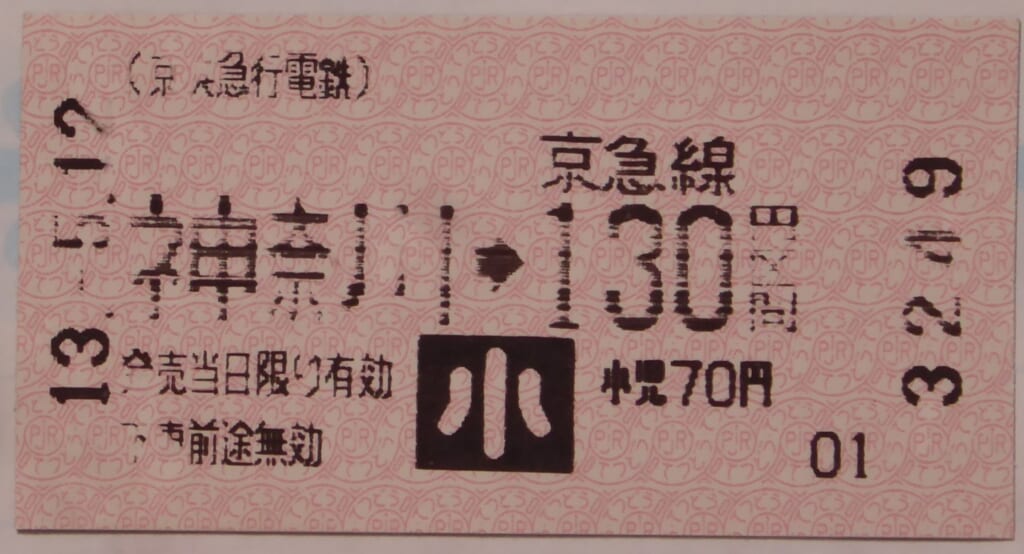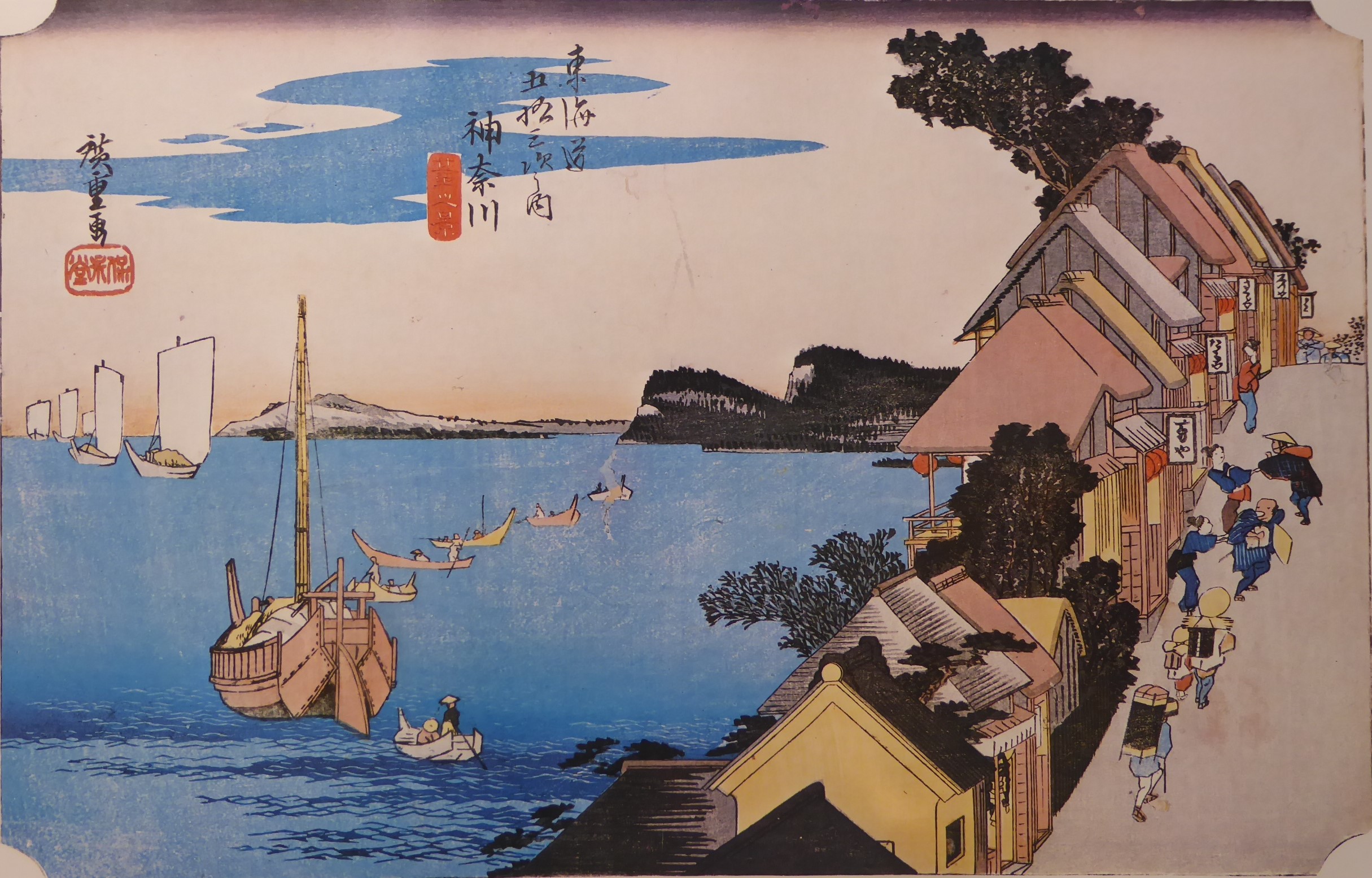Explanation of the Fifty-three Stations of the Tokaido 4 Kanagawa
From Hodogaya to Kanagawa is 4.9km, 35°28′22″N, 139°37′56.2″E
Kanagawa is the third post station on the Fifty-three Stations of the Tokaido.
It is located near Kanagawa Honmachi, Kanagawa Ward, Yokohama City, Kanagawa Prefecture.
Kanagawa Port was nearby.
The post station had two honjin inns, 58 hatago, a population of 5,753, and 1,341 houses.
Kanagawa was a town attached to Kanagawa Port, and flourished as a transit point for goods to Sagami Province and Tama District, Musashi Province.
It was designated as an open port at the end of the Edo period, but in reality, Yokohama Village (present-day Kannai district) on the opposite bank was the port that opened.
After the opening of the country, the center of commerce gradually shifted to the foreign settlement of Yokohama-mura.
In 1858, the Treaty of Amity and Commerce between the United States and Japan was signed aboard the Powhatan, which was anchored off Koshiba, Kanagawa Minato-oki.
The treaty stipulated that the port of Kanagawa be opened.
To deal with conflicts between Japanese and foreigners traveling along the highway, port facilities and a settlement were built in Yokohama-mura, located across the port. It became the present-day Port of Yokohama.
It consists of two towns, Kanagawa-cho and Aoki-cho.
The Takinogawa River flows between the two towns.
From Edo-mitsuke, adjacent to Shinjuku-mura on the Edo side, Namiki-cho, Shin-machi, Arajuku-cho, Juban-cho, Kuban-cho, Nakano-machi, Nishino-machi, and then crossing the Takinogawa River.
The townscape continues through Takino-machi, Kubo-machi, Miyano-machi, Motomachi, Nanama-machi, Shimodai-machi, Kamidai-machi, and Karuizawa.
The head inns were located in Nishinomachi, Ishii’s in Nishinomachi, and Takinomachi, Suzuki’s in Takinomachi.
The wholesale market was located in Nakanomachi, and the milepost was located in Shimodaimachi.
The townscape was not limited to just along the Tokaido road, but Nakakido Yokocho stretched inland from Jubancho, and from Nakanomachi there were Kodenmacho and Ryōshimachi along the seaside, and inland there were Iidamachi, Gotenmachi, and Futatsuyamachi.
There were branch towns such as Saitōbun (Kanagawamachi) and Mitsuzawa (Aokimachi).
The old Tokaido road passed along the current National Route 15 and Miyamae Shopping Arcade, passed Kanagawa Station and the west side of Aokibashi, Daimachi, and Kamidaibashi, continued through Kamigatamitsuke, and from Shibo Village, proceeded along the circular route 1 towards Tennomachi Station and Hodogaya Station.
The sea off Kanagawa was depicted in Katsushika Hokusai’s Thirty-six Views of Mount Fuji, The Great Wave off Kanagawa.
Clam digging in Miyazu (present-day Sakaemachi) was a local specialty.
In 1833, a storm caused a rise in rice prices, leading to rice riots in Kanagawa-shuku in September.
In 1889, Kanagawa-cho, Aoki-cho, and Shiba-mura merged to form Kanagawa-cho.
In 1901, it was incorporated into Yokohama City.
In 1601, a post station was established in Kanagawa.
Kanagawa-shuku and Kanagawaminato were directly controlled by the shogunate and were run by Kanagawa Jin’ya.
Surrounding Kanagawaminato were Namamugiminato and Shinjukuminato to the north, and Tobeminato and Nogeminato to the south.
Kamenoko rice crackers were a local specialty, but no stores currently serve them.
Kamenoko rice crackers, named after the legend of Urashima Taro, have been a popular souvenir for travelers since the Edo period, popular among feudal lords and common people alike.
A Japanese sweets shop that had been selling sweets for a long time went out of business in 2005, bringing an end to a history of nearly 300 years.
① “Hoeido version”
This is a view of the post town known as Kanagawadai.
The sea on the left is the subject of “The Great Wave off Kanagawa” from Thirty-six Views of Mount Fuji.
The oddly shaped hill visible offshore is Nogeyama.
The small cape in the distance is Honmoku.
Teahouses are lined up along the steeply uphill road.
In front of the shops, women soliciting customers are calling out to passersby.
They are interacting with a traveler being led by the hand.
In the foreground is a pilgrim known as Rokubu.
A terrace has been set up on the sea side of the teahouse.
Only those who entered the teahouse could enjoy the magnificent view from this terrace.
② “Gyosho version”
This is a view from the hill just past Kanagawa-juku.
This place is famous for its beautiful scenery. It depicts a traveler looking back at the post town.
③ “Reisho version”
The composition is of a view of a teahouse from the top of a mountain.
There are various shops, including a two-story store and a teahouse.
④ “Hokusai version”
A scene of a banquet with a female waiter in a guesthouse.
⑤ “Travel image”
Keikyu Kanagawa Station.
⑥ “Stamp image”
A ticket for Keikyu Kanagawa Station.
Hoeido version
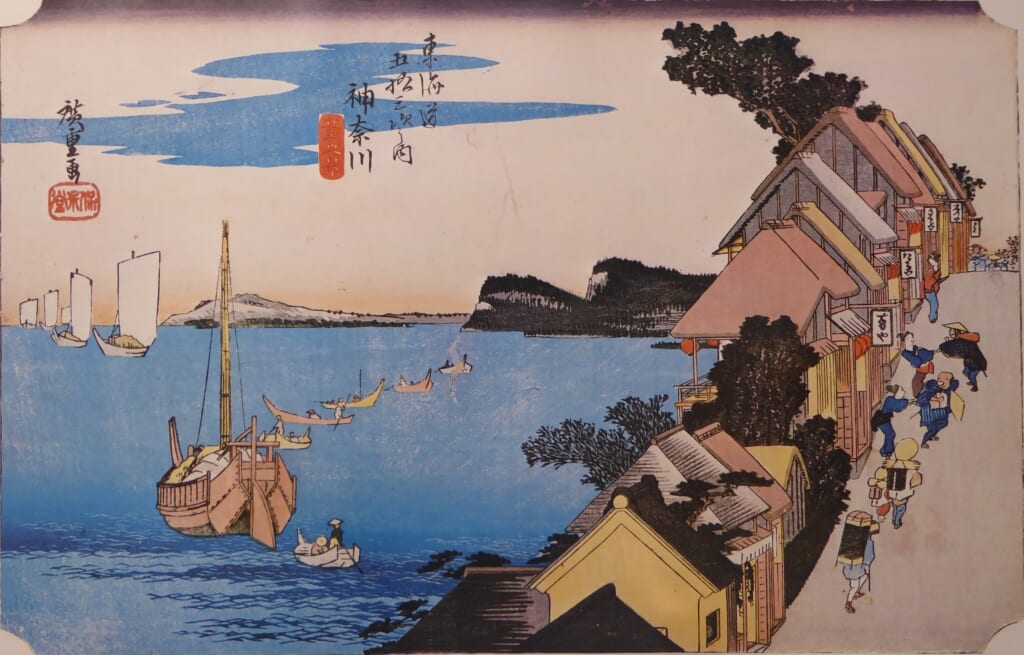
Gyousyo version
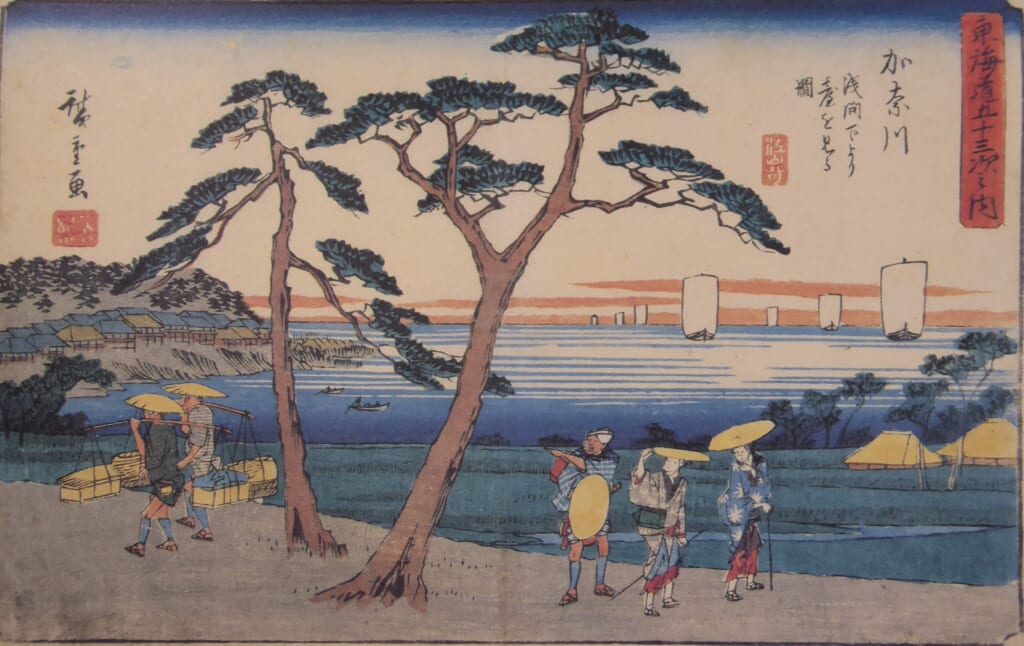
Reisho version
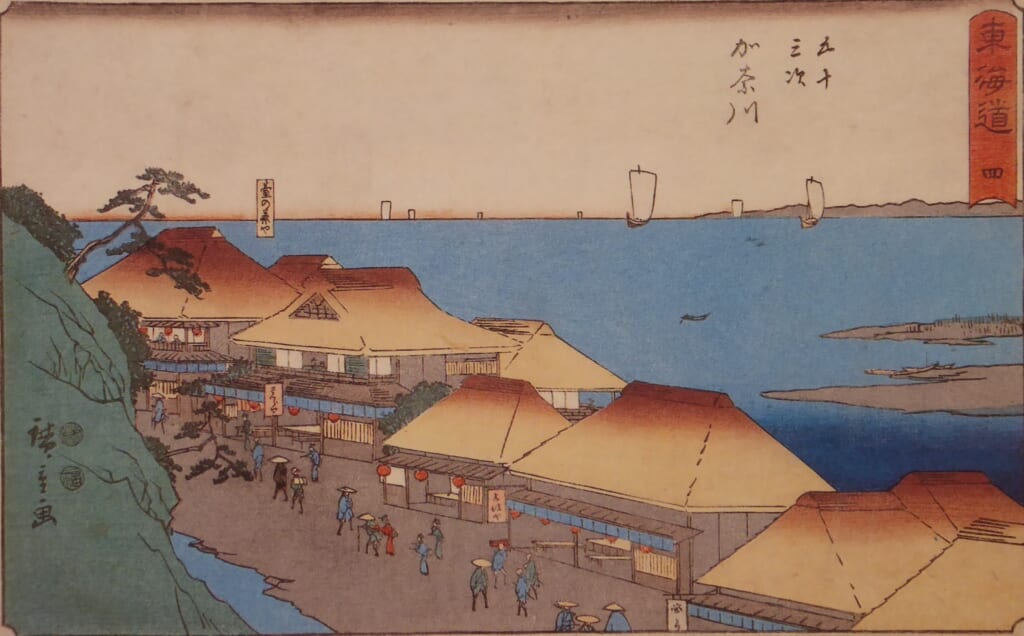
Hokusai version
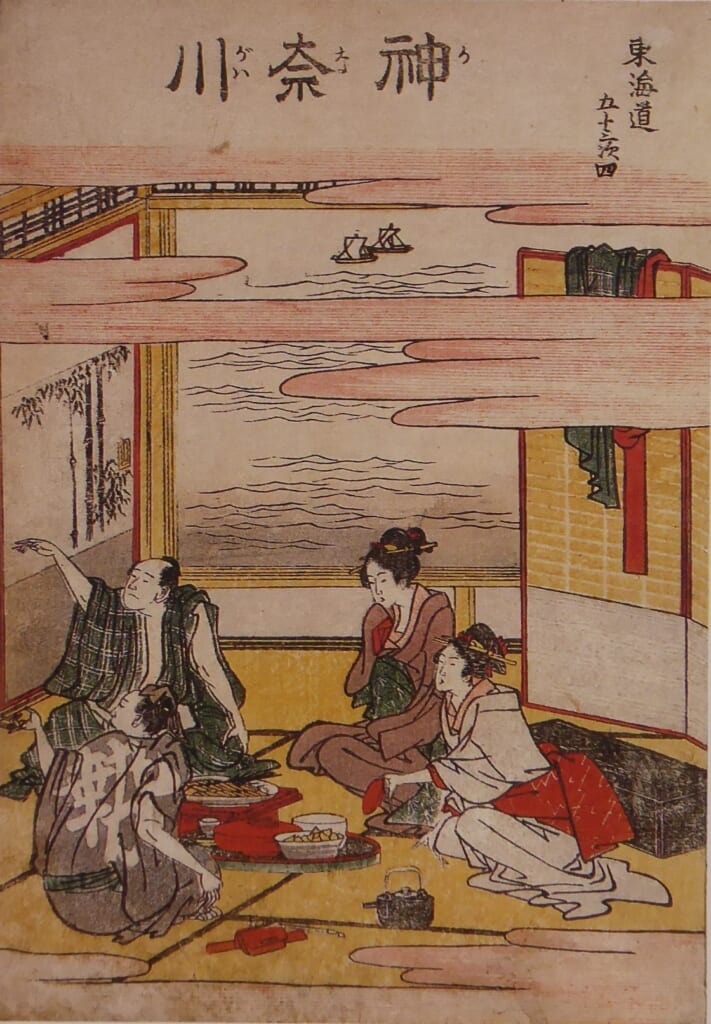
Travel image
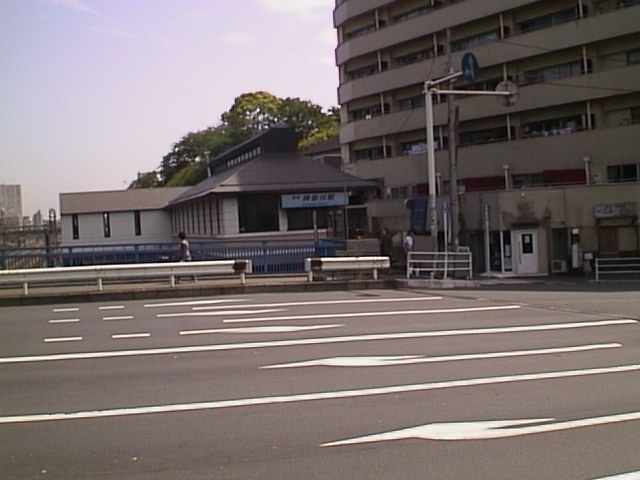
Stamp image
